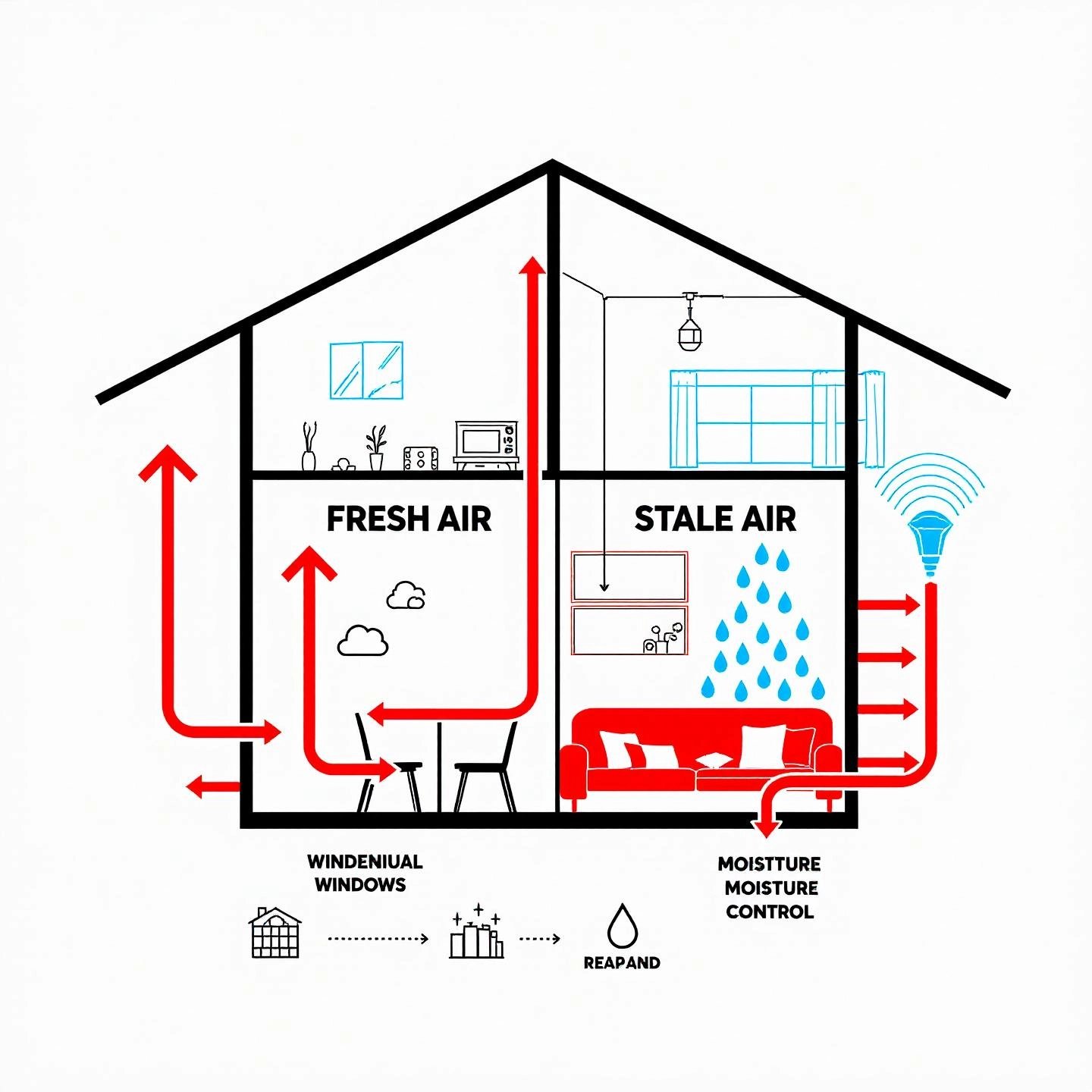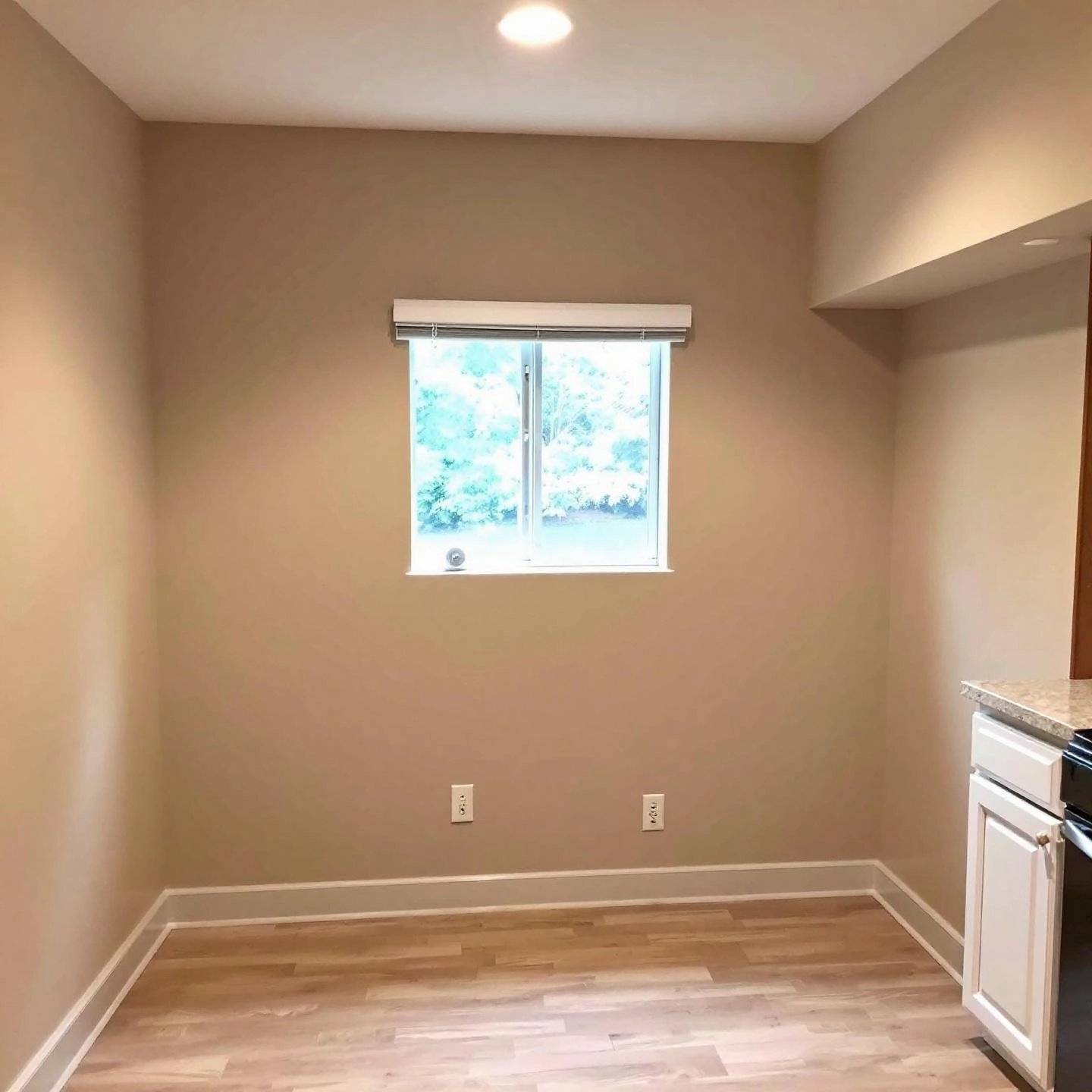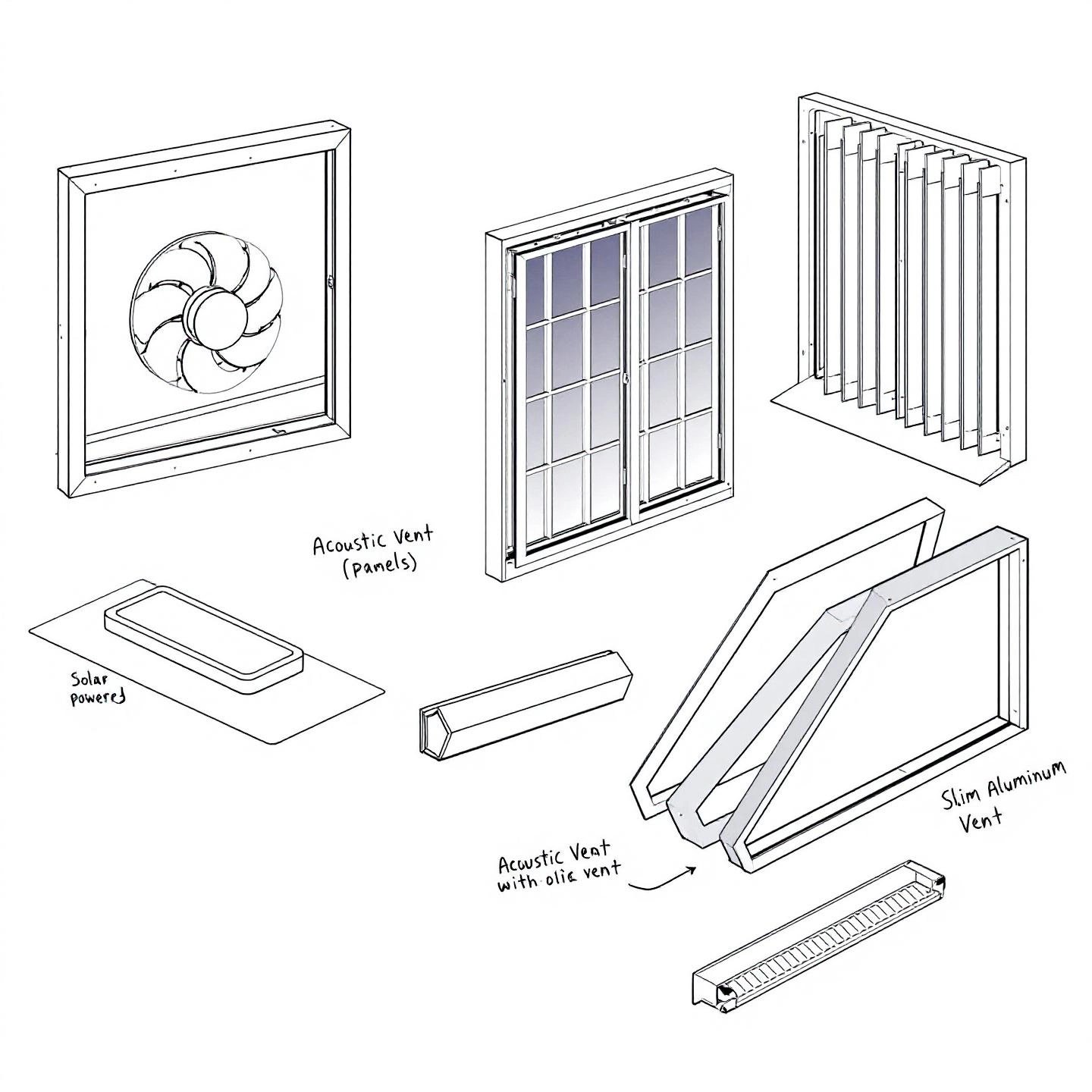
Ever noticed your home feeling stuffy, or found condensation clinging to your windows on a cool morning? These are more than minor annoyances—they’re signs your indoor air quality (IAQ) might need improvement. Window ventilation is one of the most effective, natural ways to address these issues, but it’s much more than simply cracking open a window and hoping for the best.
At its core, window ventilation refers to the intentional use of windows to create a steady, controlled flow of fresh air into your living spaces while expelling stale, humid, or polluted air. Unlike random or occasional window opening, true window ventilation is about establishing a consistent air exchange that benefits both your health and comfort. This process can be achieved through mechanical means—like window fans—or through passive strategies that harness natural forces such as wind and temperature differences.
Indoor air can quickly become polluted by everyday activities—cooking, cleaning, or even just breathing. Without proper ventilation, pollutants and moisture build up, leading to issues like:
Imagine coming home to a space that feels fresh, where you can breathe easily and sleep better. That’s the difference effective window ventilation can make.
There’s no one-size-fits-all approach. The types of window ventilation available today range from simple to sophisticated, including:
In the following chapters, you’ll discover how to choose the right fan, harness passive airflow, and address unique challenges in spaces like bathrooms and basements. We’ll explore practical solutions—from mechanical and passive systems to advanced specialty vents—so you can find the best fit for your home’s needs and your family’s well-being. Ready to breathe easier? Let’s dive into the world of window ventilation.

Have you ever wondered why some homes always feel crisp and inviting while others seem heavy or even trigger allergies? The secret often lies in how effectively fresh air circulates indoors. Proper window ventilation isn’t just about comfort—it’s a foundation for a healthier, safer, and more enjoyable living space.
Indoor air can contain a surprising mix of pollutants: dust, volatile organic compounds (VOCs) from cleaning products, moisture from showers and cooking, and even invisible germs. Without a way for these to escape, they accumulate, leading to stuffy rooms, persistent odors, and potential health issues. That’s where window ventilation benefits truly shine—it provides a steady exchange of stale indoor air with fresher, cleaner outdoor air, helping to improve indoor air quality for everyone inside.
Let’s break down the main reasons controlled window ventilation is a must for every home:
Imagine stepping into a home after a long day and being greeted by clean, invigorating air—not the scent of last night’s dinner or a musty basement. Or consider how much easier it is to focus on work or sleep soundly when the air feels fresh and light. Even during the winter, controlled window ventilation—like opening windows for short intervals or using trickle vents—can keep your indoor environment healthy without sacrificing warmth.
Ultimately, the benefits of window ventilation go far beyond comfort. They’re about creating a space where you and your loved ones can thrive, free from the invisible risks of poor air quality. In the next section, we’ll explore how to choose the right window ventilation fan to maximize these advantages for any room in your home.
Ever stood in front of a store shelf—or scrolled through pages online—trying to decide which window fan will actually make your room feel fresher? With so many options and technical specs, it can feel overwhelming. The right ventilation fans for windows can make all the difference for comfort, air quality, and even your energy bills. Let’s break down what matters most so you can confidently choose the best solution for your needs.
First, let’s clear up the difference between the main types of window fans. It’s all about the direction of airflow—and what you want to accomplish:
For best results, some homes use two fans—one set to intake, the other to exhaust—to encourage cross-ventilation and maximize airflow.
When shopping for a window fan, look beyond just price or brand. Consider these essential specifications to find a model that fits your room and lifestyle:
| Model | Type | CFM | Noise Level (dBA) | Energy Use (Watts) | Best For |
|---|---|---|---|---|---|
| Vornado Transom | Reversible | Lower (best for small/medium rooms) | 48–49 | 26–29 | Quiet bedrooms, energy savings |
| Bionaire Premium Digital Twin | Reversible | 755 | Low | Moderate | Flexible placement, quiet living rooms |
| Air King 9166F 20" Whole House | Exhaust/Intake | Very High | High | Higher | Large spaces, whole-house airflow |
| Amazon Basics Manual Twin | Manual (Intake/Exhaust) | 755 | Moderate | Moderate | Budget, small rooms |
Note: CFM and noise levels are based on manufacturer data and independent testing. Actual performance may vary depending on room size and installation.
Still unsure? Here are a few examples to help you decide:
Choosing the right window ventilation fan isn’t just about cooling down—it’s about achieving consistent, healthy airflow tailored to your space. Next, we’ll explore how to harness natural breezes and passive airflow for even more efficient, low-maintenance ventilation solutions.

Ever wished your home could stay fresh without running a fan or opening windows wide to the street? That’s where passive window ventilation comes in—a set of strategies that keep air moving naturally, saving energy while protecting your comfort and health. Let’s explore how these simple yet effective solutions work, and how you can make the most of them in your own home.
Sounds complex? Actually, it’s all about using nature’s forces—wind and temperature differences—to move air through your space. No motors, no electricity, just smart design. Here are the main ways:
With the right window placement—ideally on opposing walls and at different heights—you’ll notice a gentle, consistent breeze that refreshes your entire space.
But what if you want fresh air without leaving your windows wide open all day (or night)? That’s where modern innovations step in:
Trickle vents are especially valuable in modern, well-sealed homes where airtight construction can trap humidity and pollutants. By letting your home “breathe” in the background, they help prevent stuffiness, condensation, and even mold—without compromising your security or letting in drafts.
Not all trickle vents are created equal. The best options, like those made from aluminum, offer:
For homeowners and builders seeking a top-tier upgrade, Shengxin Aluminium’s window trickle vents stand out. With a slim, unobtrusive design tailored for uPVC, aluminum, and timber windows, they’re easy to install in both new builds and retrofits. Their adjustable airflow, weatherproof construction, and quiet operation make them a smart, energy-efficient choice for maintaining healthy indoor air—without the trade-offs of open windows.
| Scenario | Why Trickle Vents Help |
|---|---|
| Modern, airtight homes | Prevent stuffiness and allow constant, low-level ventilation. |
| Bathrooms, kitchens, utility rooms | Remove excess moisture, reduce condensation and mold risk. |
| Sound-sensitive areas | Ventilate without opening windows, preserving acoustic insulation. |
| Security concerns | Maintain airflow while keeping windows locked and secure. |
Trickle vents can be fixed for constant background ventilation or adjustable for user control, making them flexible for different needs and seasons.
By combining smart window placement, secure latches, and advanced trickle vents, you’ll enjoy a home that feels lighter, fresher, and healthier—all without the ongoing costs of mechanical systems. Plus, these solutions help regulate humidity, protect against condensation, and can even lower your energy bills by reducing the need for heating and cooling.
Ready to take your home’s air quality to the next level? In the next chapter, we’ll tackle how to solve ventilation challenges in bathrooms—spaces where moisture control is especially critical.
Ever step out of a hot shower only to find your bathroom mirror fogged and a musty smell lingering? If so, you're not alone. Bathrooms are the most moisture-prone rooms in any home, making them ground zero for mold, mildew, and even long-term structural damage if not properly ventilated. So, how do you ensure your bathroom stays fresh, dry, and healthy? Let’s break down the best strategies—whether you’re working with a bathroom ventilation window, a fan, or both.
Every shower or bath adds moisture to the air, which quickly condenses on cooler surfaces—walls, ceilings, mirrors, and especially windows. Left unchecked, this dampness can lead to:
Proper ventilation is not just a comfort upgrade—it’s a necessity for protecting your health and your home’s value.
| Solution | How It Works | Best For | Key Considerations |
|---|---|---|---|
| Ceiling Exhaust Fan | Actively pulls humid air out, venting it outside | Most bathrooms, especially those without windows | Must be sized correctly (CFM rating), installed with proper ducting, and vented outdoors—not into an attic |
| Bathroom Ventilation Window | Allows natural air exchange when opened | Bathrooms with exterior walls; best in mild, dry climates | May not be effective in humid or cold weather; building codes require a minimum window size (typically 3 sq. ft. with at least 50% openable area) |
| Window Vent Insert / Trickle Vent | Provides continuous, low-level airflow even when the window is closed | Modern, airtight homes; bathrooms with security or privacy concerns | Ideal for background ventilation; doesn’t replace the need for a fan in high-moisture settings |
| Inline or Wall-Mounted Fan | Extracts air via ductwork or directly through an exterior wall | Small or windowless bathrooms; homes without attic access | Can be quieter than ceiling fans; ensure correct placement for maximum effectiveness |
Not sure which solution fits your bathroom? Consider these scenarios:
Imagine a bathroom where mirrors stay clear, surfaces dry quickly, and the air always feels fresh. By combining strategies—mechanical fans, operable windows, and passive vents—you’ll achieve reliable moisture control and a more comfortable space. Next, we’ll look at how to tackle similar challenges in basements, where musty odors and dampness require their own set of smart ventilation solutions.

Ever walked downstairs and been greeted by a musty smell or stuffy air in your basement? If so, you’re not alone. Basements are notorious for poor air quality—thanks to limited sunlight, high humidity, and a tendency to trap stale air. But with the right basement window ventilation system, you can transform your lower level into a fresh, comfortable living space. Let’s break down why basement ventilation matters and how you can achieve it—without complex renovations or sky-high costs.
Basements naturally collect moisture and odors, making them a prime spot for mold, mildew, and even radon gas—a colorless, odorless radioactive gas that can seep in from the ground. Poor ventilation not only leads to that telltale musty smell but can also impact your family’s health and the integrity of your home. That’s why a dedicated approach to basement air quality is essential, whether you use the space for storage, a home gym, or extra bedrooms.
Imagine fresh outdoor air circulating through your basement, whisking away humidity and odors. That’s the promise of a basement window ventilation fan. These fans are specially designed to fit hopper-style or slider windows commonly found below grade. Here’s how they help:
While a window fan is a great start, a truly effective basement window ventilation system often combines multiple strategies:
"Reviving your basement with proper ventilation isn’t just about comfort—it’s an investment in your home’s health and your family’s well-being."
By combining a basement window ventilation fan, dehumidifier, and a few smart habits, you’ll notice a fresher, healthier basement—no matter the season. Next, we’ll explore all-in-one window ventilation kits for those seeking quick, adaptable solutions for any room in the house.
Ever wish you could boost your home’s airflow without drilling holes, hiring a contractor, or making permanent changes? That’s where a window ventilation kit steps in—a ready-to-use solution designed for anyone who wants better air quality without the hassle. Whether you’re renting, remodeling, or just looking for a quick fix, these kits offer a practical way to introduce fresh air and remove stale indoor air with minimal effort.
Sounds complex? Actually, most window vent kits are designed for simplicity and adaptability. Here’s what you’ll typically find inside the box:
Some advanced kits may also include features like remote controls, programmable timers, or even filters for added air cleaning.
Why choose a kit over building a custom solution? Here’s what makes these kits a favorite for many homeowners and renters:
Imagine you’re renting an apartment and can’t make structural changes, or you need a quick way to ventilate a guest room, home office, or studio. Kits shine in these scenarios:
With a window ventilation kit, you get a blend of speed, flexibility, and affordability—making it easier than ever to breathe easier in any room. Next, we’ll address how to balance ventilation when your window is already occupied by an air conditioner, ensuring you never have to choose between cool comfort and fresh air.
Ever wondered why your room still feels stuffy even with the air conditioner humming away? Or maybe you’ve heard that window AC units pull in fresh air from outside, but you’re not sure if it’s true. When your only window is taken up by an air conditioner, keeping the air fresh can seem tricky—but with the right approach, you don’t have to choose between staying cool and breathing easy. Let’s break down what really happens with window air conditioner ventilation and how you can optimize airflow in your space.
It’s a common misconception that running a window AC means you’re automatically getting fresh outdoor air. In reality, most window air conditioners do not bring in outside air. Instead, they work by recirculating the air already inside your room—cooling it down and blowing it back out, but rarely introducing fresh air from outside. The air you feel is filtered and cooled, but not new.
So, if your space feels stale after hours of AC use, it’s not your imagination. The air is simply being cycled over and over, which can lead to stuffiness, a buildup of carbon dioxide, and lingering odors.
Some newer window air conditioners feature a lever or button labeled “vent,” “air exchange,” or “fresh air.” This setting allows you to open a small vent on the unit, letting in a limited amount of outside air when you choose. However, unless you manually open this vent, your AC continues to recirculate indoor air only.
Keep in mind: The vent setting is not a substitute for true, whole-room ventilation, but it can help in a pinch—especially if outdoor air quality is good.
When your window is blocked by an AC unit, you still have options for maintaining healthy airflow. Here’s how you can achieve better window ac ventilation without sacrificing comfort:
| Situation | Recommended Action |
|---|---|
| Single window, no vent option | Install a trickle vent or periodically remove the AC to open the window for fresh air. |
| Multiple windows | Open another window for cross-ventilation; use a fan to direct airflow. |
| AC with vent lever | Open vent when outdoor air is clean; close during high pollen or pollution days. |
| Concerned about air quality | Add an air purifier to remove pollutants from recirculated air. |
Imagine enjoying a cool, comfortable room that never feels stale, even during the hottest days. By understanding how window air conditioners work—and using these simple strategies—you’ll keep your indoor air feeling fresh, no matter how many windows are occupied. Next, we’ll explore advanced window ventilation solutions for those seeking even more efficient, high-tech ways to keep their homes healthy and comfortable.

Ever wondered if there’s a smarter way to keep your home fresh—especially when energy savings, noise, or design are top priorities? Today’s advanced window ventilation systems go far beyond basic fans or open windows. From solar-powered technology to acoustically insulated vents, modern solutions can transform any space into a healthier, more comfortable environment—without sacrificing security or aesthetics. Let’s explore what’s possible and how you can choose the right specialty vent for your needs.
Imagine a ventilated window that keeps your room cool and fresh—even during power outages or in off-grid locations. That’s the promise of solar-powered window fans. These systems use photovoltaic panels to harness sunlight, driving a fan that circulates air without drawing from your home’s electricity. The Mahana PV Window Fan is one such example, designed for accessibility, efficiency, and sustainability. Here’s how solar-powered window fans stand out:
Real-world testing of the Mahana PV Window Fan showed it could run for up to eight hours on battery power alone, with a 100W solar panel and a 12V 35Ah battery providing reliable, sustainable airflow. For anyone seeking a window ventilation system that’s both green and resilient, this type of solution is a game changer (Appropedia).
Live near a busy street or in a noisy neighborhood? Opening a window for fresh air can sometimes mean letting in unwanted sound. That’s where acoustically insulated window vents come in. These specialty vents are engineered with sound-dampening materials, allowing air to flow while blocking much of the outside noise. Benefits include:
Acoustic vents are especially useful in apartments, urban homes, or any space where a balance of fresh air and tranquility is essential.
If you’re building, renovating, or simply want a low-maintenance way to keep your indoor air fresh, high-performance trickle vents are a top-tier choice. These vents provide constant, controlled airflow—even when windows are closed—helping to prevent condensation, stuffiness, and moisture-related issues.
Whether you’re working with uPVC, aluminum, or timber frames, Shengxin’s trickle vents are easy to install and require minimal maintenance—simply wipe clean and check for dust buildup to ensure optimal performance.
| Solution | Best For | Key Advantages |
|---|---|---|
| Solar-Powered Window Fan | Off-grid homes, eco-conscious users, energy savings | No grid power needed, sustainable, DIY-friendly |
| Acoustic Window Vent | Urban areas, bedrooms, home offices | Reduces noise, maintains air flow, discreet design |
| High-Performance Trickle Vent | New builds, renovations, security-conscious homes | Continuous ventilation, energy efficient, architecturally integrated |
Imagine a home that stays fresh, comfortable, and quiet—no matter the season or your neighborhood. By choosing an advanced window ventilation system tailored to your needs, you’ll enjoy healthier air, greater peace of mind, and a space that truly supports your lifestyle. In our final chapter, we’ll recap the most effective window ventilation solutions and help you decide which approach will work best for your unique home.
Imagine walking into your home and breathing in air that feels as fresh as the outdoors—no stuffiness, no lingering odors, and no worries about hidden moisture or pollutants. Throughout this guide, we’ve explored a range of window ventilation solutions that can help you achieve exactly that, no matter your home’s layout, climate, or unique challenges.
Let’s quickly review the main approaches covered in this article, so you can decide which combination works best for your space:
Sounds like a lot? The best approach is to match your window ventilation solution to your specific needs. Ask yourself:
For most modern homes, a layered strategy works best—combining passive airflow with mechanical fans in high-use areas, and supplementing with trickle vents for continuous, low-level ventilation. This not only helps improve indoor air quality but also reduces the risk of mold, protects your investment, and supports overall comfort year-round.
Ready to transform your indoor environment? Start by assessing your current ventilation—do you notice condensation, persistent odors, or areas that feel stale? If so, consider implementing one or more of the solutions we’ve discussed. For a seamless, energy-efficient upgrade, high-quality trickle vents from Shengxin Aluminium are a proven, low-maintenance way to keep fresh air flowing without the drawbacks of open windows.
By taking a proactive approach to window ventilation, you’ll not only improve indoor air quality but also create a space where you and your loved ones can thrive. Breathe easier, sleep better, and enjoy a truly comfortable home—one window at a time.
Window ventilation is the intentional use of windows, fans, or built-in vents to create a steady flow of fresh air indoors while removing stale air. This process helps reduce indoor pollutants, control humidity, and prevent problems like mold, stuffiness, and condensation, supporting a healthier and more comfortable home.
Yes, trickle vents are highly effective for maintaining background ventilation in modern, airtight homes. They provide a controlled stream of fresh air without requiring windows to be fully open, reducing condensation, mold risk, and stuffiness while maintaining security and energy efficiency.
For windowless bathrooms, a ceiling or wall-mounted exhaust fan is essential. Choose a fan with the correct airflow rating (CFM) and ensure it vents outside. Adding features like humidity sensors or timers can further improve moisture control and air quality.
Most window air conditioners recirculate indoor air rather than bringing in fresh air from outside. Some units have a 'vent' setting to allow limited outdoor air in, but for continuous ventilation, consider using a trickle vent or opening a second window if possible.
Shengxin's aluminum trickle vents offer durable, weather-resistant, and energy-efficient background ventilation. Their slim, unobtrusive design fits uPVC frames, and the adjustable airflow slider allows for customization. They help prevent condensation and mold without compromising security or comfort, making them ideal for modern homes.
 Интернет Сервис
Интернет Сервис 0086 136 3563 2360
0086 136 3563 2360 sales@sxalu.com
sales@sxalu.com +86 136 3563 2360
+86 136 3563 2360